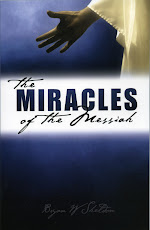The Roman Centurion. The third conversion is that of
Cornelius, a soldier in the employ of Rome
In summarizing
these three important personal experiences, there are some things to remark on.
Placed as they are in Luke’s history, it suggests that they are representative
of certain groups of people. These three conversions contain valuable
indicators that show how the New Covenant gravitated from a national, fully
Jewish environment to an international Jewish/Gentile environment.
This group is made up of
representatives from the three main people groups recognized by the Hebrew
nation; a Jewish proselyte (the
Ethiopian statesman), a Hebrew of
Hebrews (Rabbi Shaul), and a Gentile
(the Roman Centurion).
They also represent the three main population
streams that rose from the sons of Noah, that is, Ham, Shem and Japheth. The Ethiopian is from Africa (Ham); the Centurion is from Europe (Japheth) and Saul is a Jew
(Shem). They are evidence of the truth expressed by Paul, the gospel of the
Messiah “is the power of God to salvation
for everyone who believes, for the Jew first and also for the Greek (Gentile)”.
(Rom.
In addition, there are elements of
the gospel highlighted which indicate the means by which the gospel is
effected. With the African the Word of
God is central, he was reading from Isaiah, giving Philip the opportunity
to explain that Jesus was the Messiah predicted in the T’nach. Clearly, this
feature is central to all conversions because “faith comes by
hearing, and hearing by the word of God”. (Rom. 10:17) However, in Luke’s
history, Saul’s experience revolved around the
Lord – it was a personal
encounter with the risen Messiah. Here is emphasized the centrality of the
person of Jesus in salvation. Paul himself will give the only answer possible
when asked “what must I do to be saved?” (Acts 16.30) “Believe on the Lord
Jesus Christ, and you will be saved.” (Acts 16:31). With Cornelius the descent of the Spirit of God upon the household is
the dominant feature. Again, without the work of the Spirit of God there can be
no salvation: “no one can say that Jesus
is Lord except by the Holy Spirit”. (1 Cor. 12:3)
And could we not say that the whole
salvific act of Jesus, the death, resurrection and ascension, is incorporated
here. His death is evident in the
Isaiah passage that the Ethiopian read, and no doubt, central in the witness of
Philip. The resurrection is key in
the experience that Paul had on the Damascus
A last comment on these significant
personal encounters – the personnel involved were Peter, the individual who had
authority from the Messiah to open the door of salvation to Jew and Gentile,
and who later became the apostle to the Jews; Philip the evangelist, a man
gifted of the Holy Spirit, who was himself a gift to the Church;[2]
and of course the one person who will dominate the second half of the book of
Acts and begin to take the gospel to the ends of the earth – Saul, later known
as Paul, the apostle to the Gentiles. This particular conversion was of such
importance that the Savior took personal control of the event, and Saul’s
meeting with the resurrected Christ became a cornerstone of his defense of his
apostolic commission.[3]
Let us tabulate these truths and see them all side by side.
Acts 8.26 ff Acts 9.1 ff Acts 10.1 ff
Personal Details Personal
Details Personal
Details
Ethiopian
Statesman Jewish Rabbi Roman Centurion
Jewish Proselyte Jew (Hebrew of Hebrews) Gentile
Descendent of Ham Descendent of Shem Descendent of Japheth
Emphasis: Emphasis: Emphasis:
Word of God & Person of Jesus & Spirit of God &
Christ Crucified Christ Resurrected Christ Ascended
Result: Result: Result:
Saved and Baptized Saved and Baptized Saved and Baptized






No comments:
Post a Comment